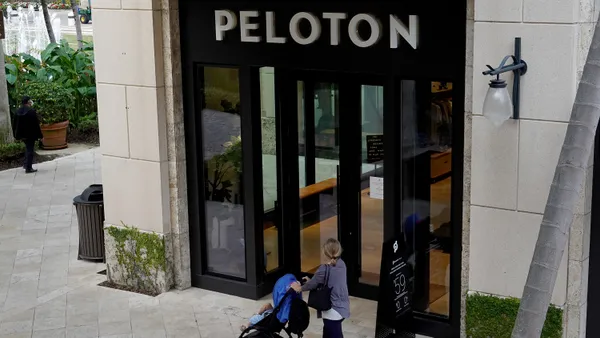Dive Brief:
-
Amazon remains a price leader in several categories, with prices averaging 10% less than all other retailers studied by Profitero, according to the e-commerce analytics firm's latest research.
-
The most intense price competition is evident among major retailers Walmart, Target and Jet, whose average online prices combined are just 4.5% more than Amazon. Walmart is getting aggressive with price matching, offering identical prices to Amazon on more than half (53%) of all products — compared to 37% matched by Target and 35% by Jet, Profitero found.
-
Meanwhile, Amazon is dominating in a basket of its own best-sellers, both in its marketplace and its retail arm, with Walmart close behind on identical SKUs, according to data from online global pricing intelligence software firm Prisync emailed to Retail Dive. On 49 items — in toys and games, electronics, camera and photo, video games and books — Amazon prices were 7% lower in aggregate.
Dive Insight:
The price war in online retail rages on. Compared with findings in Profitero's October study, Amazon has regained its price lead over Walmart in beauty, and it's now Jet's average prices that are closest to Amazon, at just 1.4% more. (Online beauty prices these days at CVS and Walgreens are about a third higher than Amazon.)
Consumer product categories seem more prone to price wars with Amazon than non-CPG categories, with Amazon losing about 6.5% of its pricing advantage in that area. Target's average CPG prices online are within 6.3% of Amazon — a 10.6 percentage point swing, Profitero found. Similarly, Jet's CPG prices were only 4.3% higher than Amazon.
In household supplies, Amazon's average prices are 2.6% lower than the online prices of its closest rival in that category, Walmart. Home Depot's online prices were 6.3% higher, and Jet's were 5.8% higher, on average, than Amazon, Profitero found.
Amazon Prime Pantry looms over the consumer product space. "Prime Pantry is a boon for the retailer, helping create price separation from the competition," according to Profitero. "Exactly matched Prime Pantry products are almost 11% cheaper, on average, than prices at Walmart, Target and Jet combined."
And even while Target, for example, tries to differentiate itself through its private brands — possibly explaining why the retailer's non-CPG prices are 16.9% higher, on average, than Amazon — Amazon is countering that with its own exclusives.
"As we can see from the list of best-selling items on Amazon, 50% of them are not available on its major competitors," Prisync CEO Burc Tanir told Retail Dive in an email. "For the remaining, competitive 50%, Amazon is about 8% cheaper than Walmart on average. This is a clear demonstration of how Amazon leverages both assortment and competitive pricing as its main competitive advantages in the market."













